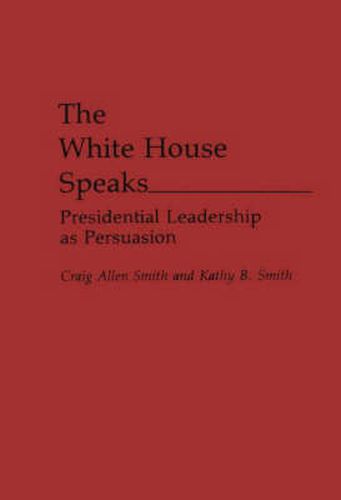Readings Newsletter
Become a Readings Member to make your shopping experience even easier.
Sign in or sign up for free!
You’re not far away from qualifying for FREE standard shipping within Australia
You’ve qualified for FREE standard shipping within Australia
The cart is loading…






This work treats presidential leadership as persuasive communication. The major theories of presidential leadership found in the literature establish the central role of persuasion, and introduce the interpretive systems approach to political communication as a theoretical framework for the study of presidential leadership as persuasion. Case studies examine recent presidents’ use of public persuasion to perform their leadership functions. Particular attention is devoted to coalitional constraints on presidential pardoning rhetoric, presidential leadership through the politics of division, the political significance of conflicting political narratives, the sermonic nature of much 20th-century presidential discourse, the difficulties inherent in persuading the public to make sacrifices, and the dangers of relying too heavily on public rhetoric. The concluding chapter considers the rhetoric that contributed to the demise of the Bush presidency, the election of Bill Clinton, and the challenges facing the Clinton presidency.
$9.00 standard shipping within Australia
FREE standard shipping within Australia for orders over $100.00
Express & International shipping calculated at checkout
This work treats presidential leadership as persuasive communication. The major theories of presidential leadership found in the literature establish the central role of persuasion, and introduce the interpretive systems approach to political communication as a theoretical framework for the study of presidential leadership as persuasion. Case studies examine recent presidents’ use of public persuasion to perform their leadership functions. Particular attention is devoted to coalitional constraints on presidential pardoning rhetoric, presidential leadership through the politics of division, the political significance of conflicting political narratives, the sermonic nature of much 20th-century presidential discourse, the difficulties inherent in persuading the public to make sacrifices, and the dangers of relying too heavily on public rhetoric. The concluding chapter considers the rhetoric that contributed to the demise of the Bush presidency, the election of Bill Clinton, and the challenges facing the Clinton presidency.